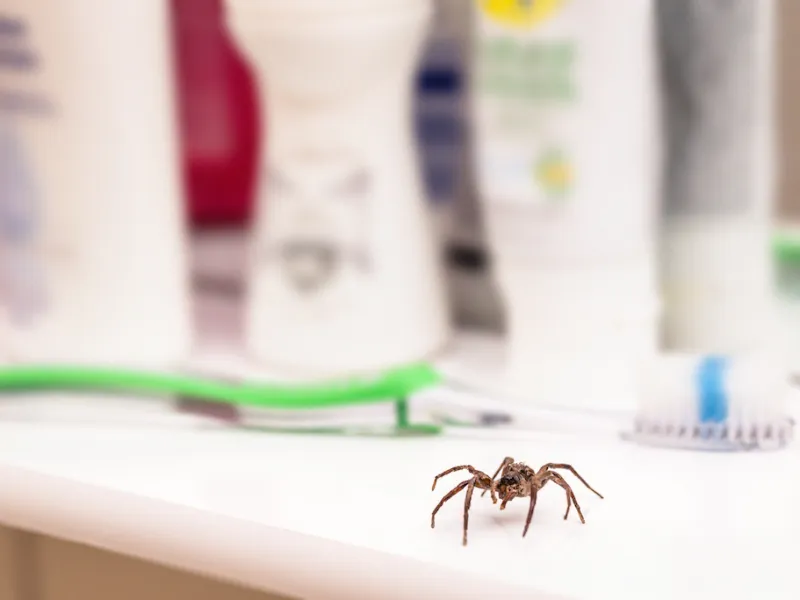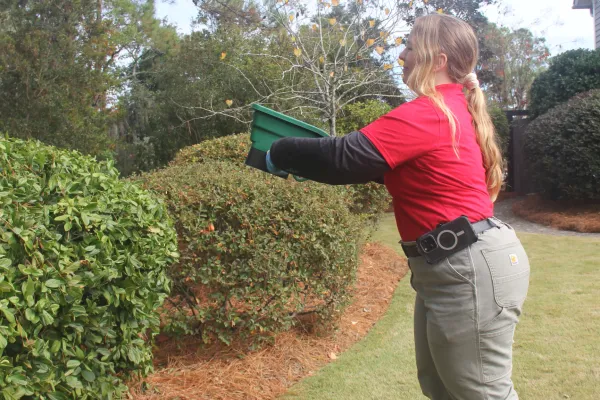5 Types of Household Spiders

If you stop someone on the street and ask them what their least favorite bug is, nine times out of ten they are going to say spiders. Why? Because these creepy arachnids hold a cultural grip over men, women, and children alike. Their spindly legs, quick scurries, and tendency to reside in cold dark corners give them quite the spooky effect. Despite their creepy appearance, spiders are a cornerstone of environmental health. Most ecologists agree that they are necessary for the overall lifecycle and balance of the environment at large. However, even though they may be required for the environment, that doesn’t mean you have to have them in your house. Our team of pest control specialists at Palmetto Exterminators has compiled a list of five common household spiders. Being able to recognize what exactly is in your home is the first step to getting them out.
American House Spiders
American house spiders are known for their webs. They belong to a group known as the cobweb spiders and typically build their webs in basements, garages, closets, and crawlspace-like spaces. They are about the size of a nickel and grayish brown in color. Although they are not venomous, they can bite. The most severe bite from an American house spider will feel most similar to a bee sting. The area will become inflamed and itching and swelling may occur, but symptoms will disappear on their own. These kinds of spiders live through all seasons and mate at any time of the year, so you could find one in your home year-round.
Jumping Spiders
Jumping spiders are often mistaken for black widows because of their small black bodies and compact legs, but don’t worry jumping spiders aren’t nearly as dangerous. They are extremely small, usually less than an inch big, and their coats can be iridescent. They hunt for their prey during the day so you will probably see them along a windowsill, on a screen door, or really any area covered in sunlight. They move in quick jumps, hence their name. They can bite but they are usually harmless to humans barring an allergic reaction. Jumping spiders have the best vision of any other spider species and actually have eight eyes! Jumping spiders are most attracted to areas around doors and windows, so if you keep seeing them around those areas in your home you may have an infestation.
Wolf Spiders
Wolf spiders are the biggest spiders you’ll find on this list and some people even keep them as pets. They can enter your house through foundation cracks, attached garages, or windows. They are considered a hunting spider but don’t worry they only hunt for insects. They get their name from the way they catch their prey. Most Wolf spiders don’t even spin webs, they are the sprinters of the spider world. They sprint down their prey and then pounce on it like a wolf. It may be tempting to squash these spiders as soon as you see one, but if it’s carrying eggs you could release thousands of tiny spiders, so it’s better to put down glue traps and then return them to the outdoors.
Hobo Spiders
Hobo spiders are considered one of the more aggressive spider species. They are not dangerous to humans other than a potentially irritating bite, but they build funnel-shaped webs throughout your home. They typically hide in basements or under wood piles. They are poor climbers so you are most likely to encounter one on the ground floor or basement areas of your home. Mating season for Hobo spiders is late June to August, so peak infestation time will be in July and August when male Hobo spiders are out and about searching for a mate.
Brown Recluse
It is extremely rare to find a Brown Recluse in the Carolinas, but they do inhibit neighboring states like Georgia and Kentucky. Though they do not normally live here, they could hitch a ride with summer travelers. Their abdomen is shaped like a violin and a quick way to tell if you’re dealing with a Brown Recluse versus another brown spider is their eye number: the Brown Recluse only has six eyes as opposed to the typical eight of most arachnids. Luckily, they can’t bite through clothing, but if you do find yourself bitten by one seek medical treatment immediately. Symptoms are extremely uncomfortable and for children or adults with other health risks can be potentially deadly.
If you regularly see any of these spiders in your home, contact your local exterminators. While stepping on them or putting them outside will get rid of the immediate problem, it may not fix what’s bringing them to your home in the first place. At Palmetto Exterminators, our team of certified pest experts are happy and ready to help with any of your pest control needs. For expert advice or to schedule an appointment, please contact us today.


